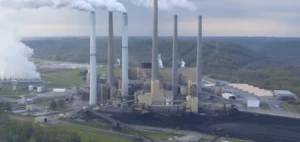The decline in electricity production from coal in India for the second consecutive month in September 2024 marks a significant turning point in the country’s energy dynamics. This phenomenon is primarily due to a slowdown in electricity demand growth and a rapid increase in solar energy production and other renewable sources.
Since the pandemic, India had experienced continuous growth in coal usage for electricity production, but the months of August and September 2024 reversed this trend. This decrease of 5.8% in September and 4.9% in August is attributed to several factors: lower demand due to climatic conditions, an increase in solar energy production (+26.4% in September), and a rise in the share of renewables in the overall energy mix.
Growth of Renewables
The share of renewable energy reached a historic record of 13.9% of the country’s electricity production for the third quarter of 2024, largely thanks to new solar installations and an increase in hydroelectric capacity, which climbed by more than 26% compared to the previous year. This rapid diversification reflects India’s efforts to reduce its dependence on coal, despite forecasts of increased overall energy demand.
The reduction in coal usage for electricity production has had a direct impact on national production and imports. Coal India’s production, the country’s main coal producer, fell at the fastest rate since the pandemic in September 2024. Coal imports also decreased by 6.1%, the largest drop in 12 months. However, long-term forecasts remain optimistic with an expected rise in energy demand of 8% in 2024, compared to 6.5% in 2023, supported by industrial expansion and overall economic growth.
Perspectives and Consequences
This slowdown in coal production could signify a major restructuring of the Indian energy market. Although coal still accounts for more than two-thirds of electricity production, the current trend shows a progression towards a more sustainable energy transition. Nuclear capacity has also contributed to this evolution, with an 18.5% increase in production in the third quarter, further reducing coal’s share in the energy mix.
For the industrial sector and investors, this evolution necessitates rethinking energy supply strategies and investments in infrastructure. India could position itself as a leader in the adoption of renewable energies among emerging economies, while continuing to face challenges related to fluctuating energy demand.
The consecutive decline in coal production in India is more than just a seasonal slowdown: it illustrates a structural shift in the country’s energy mix, driven by climatic factors and technological advancements in the renewable energy sector.






















